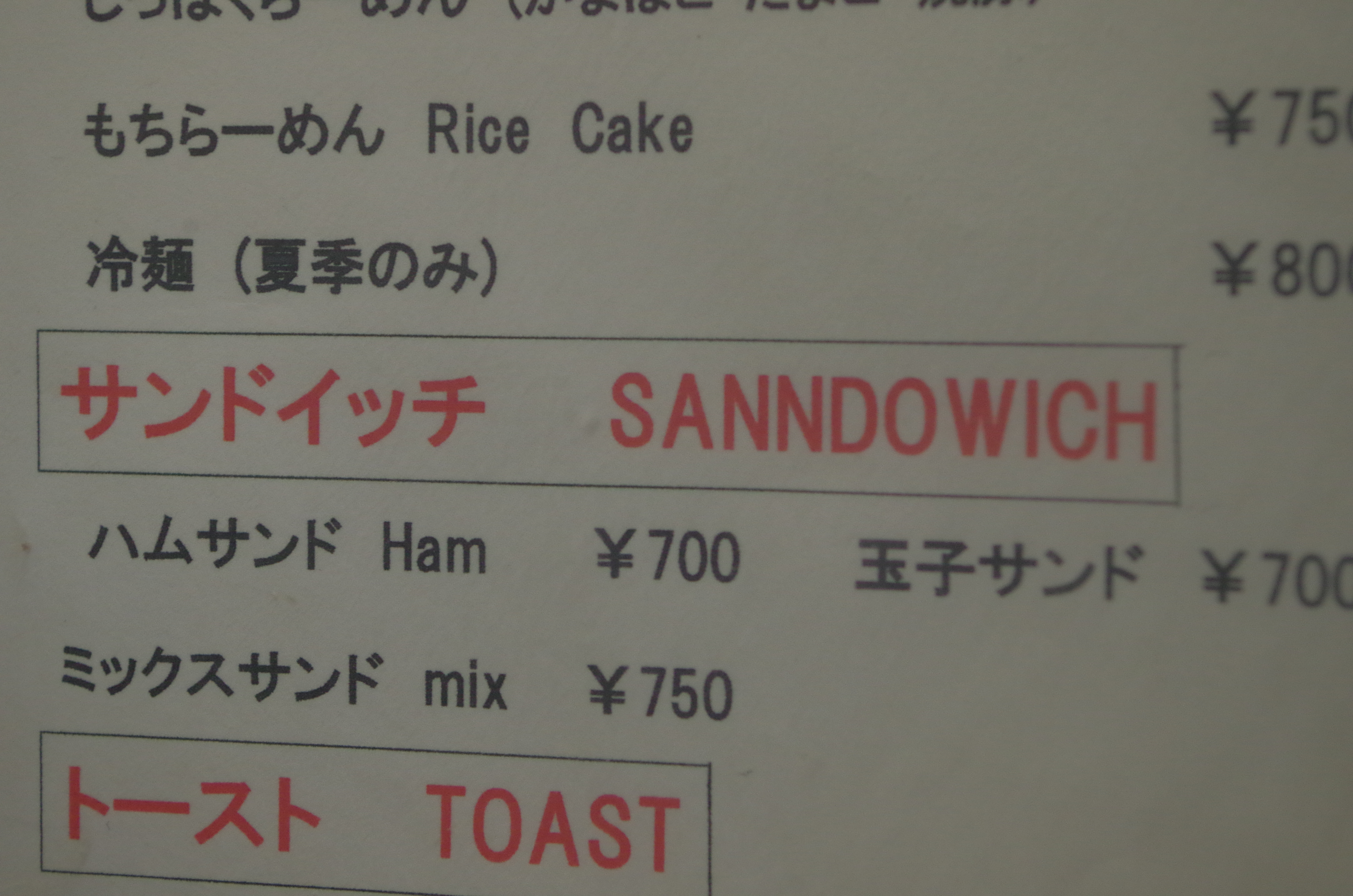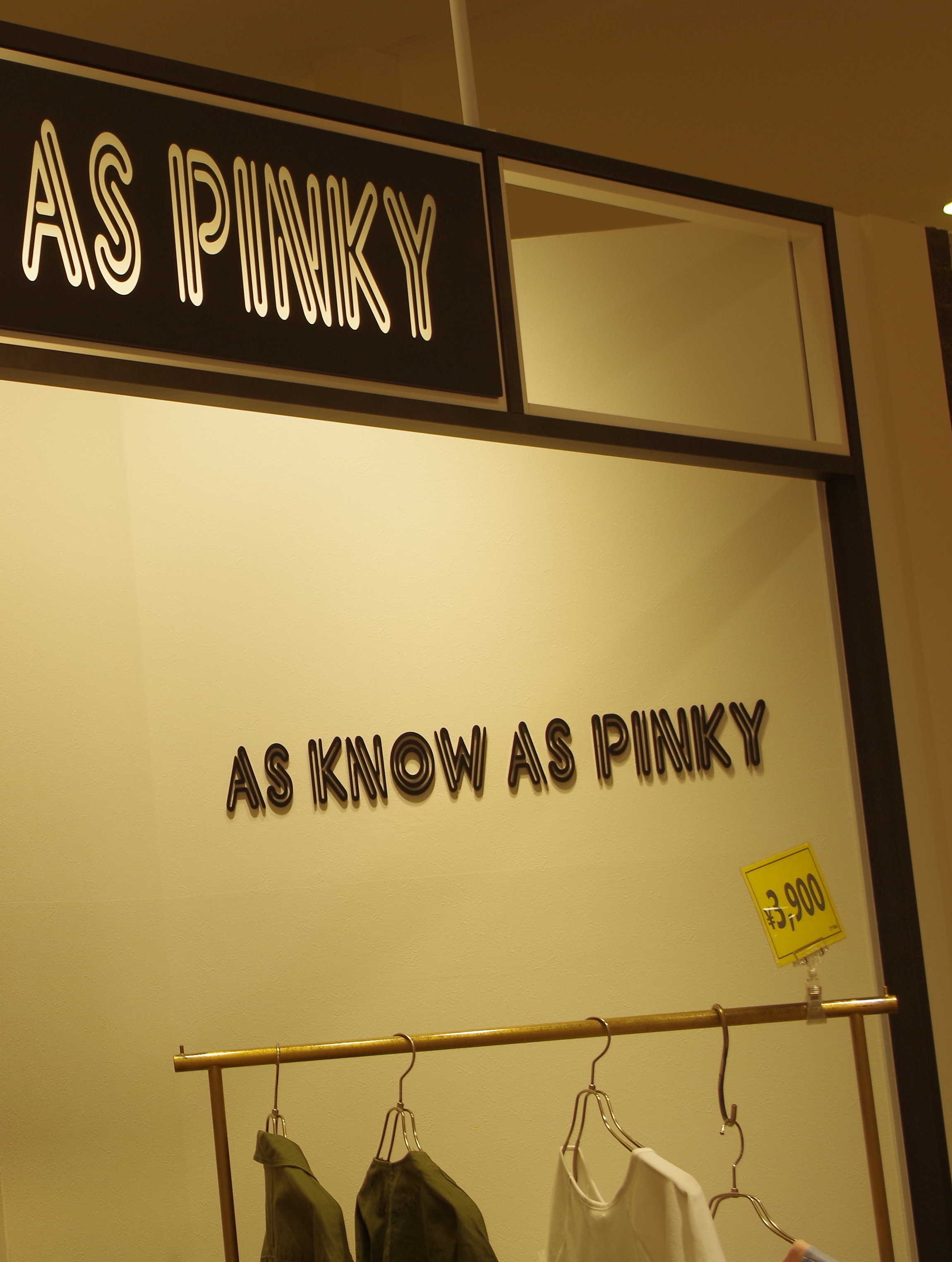In Kyoto
Or the use of foreign words in marketing
In Kyoto, the ancient capital of Japan, there is a way, known as The Philosophers’ Path, that follows a stream between the temples of Ginkaku-ji and Nanzen-ji. Although it is now crowded by modern houses – some beautiful, some ugly- it carries, especially at cherry blossom time, something of the memories of old Japan. It is a magnet for tourists and so the cafes mix the traditional and the contemporary, the local and the international. And the language of food reflects this. In one café we were offered, in addition to various local options, pizza and sanndowich.
Sanndowiches and paninis
This latter offering interested us at The Yorkshire Wordwright the most. Just like pizza, the name sandwich, named for the eponymous English Earl who asked for his meal between slices of bread, has been adopted by many other countries. As contact between cultures has increased, so the use of loanwords has too. It is particularly seen in food. As our culinary tastes have diversified, so we have needed new terms to describe the new foods we eat.
Searching for a description of new dishes, it is easiest to use the existing term, adapted perhaps to make it easier to pronounce, or altered just because early users didn’t get it quite right. Paninis in Britain are an example of the latter: it should really be panino (singular) or panini (plural). Sanndowich is an example of the former. It is difficult for a native Japanese speaker to pronounce words with consecutive consonant sounds, so sandwich acquired an additional vowel to separate them. This was written into the Japanese phonetic, katakana script. When translated back into Romaji script this was preserved. The café will have been unaware that this was not a faithful representation of the English. They may not even be aware that it is an originally English word. How many of us know, with certainty, the origins of many even recently arrived loanwords in English: bikini, satay, paparazzi, or as we have discussed before, mocha?
Foreign words in marketing
This set us thinking. There must also be many examples of the use of loanwords or phrases in marketing, where the origin of the loanwords is not hidden or forgotten, but deliberately used. These could be examples either where the loanword or phrase is known for its origin, or where the advertiser newly borrows it and is deliberate in proclaiming its origin. Vorsprung Dursh Technik was the famous first example we remembered.
In 1982, Sir John Hegarty co-founded advertising agency BBH and managed to secure the account for Audi UK. Audi, a brand of Volkswagen, had been selling in Britain for some years, but its market share was still low. On a visit to Germany to investigate how to sell Audi’s cars to UK drivers, Hegarty spotted the slogan at an Audi factory. Mulling it over, he had the crucial insight that the generic British envy of German engineering excellence was enough to make a German engineering slogan a powerful way of associating quality and innovation with the Audi brand.
There was some early opposition, with scepticism that ‘advancement through technology’ was an attractive piece of branding. But it worked and the strapline is now one of the most famous and long-lived of its kind and Audi have taken significant time and money to copyright it.
A more recent example of the same would be the va-va voom campaign for Renault, again using the association of French sexiness to sell a car brand. More tellingly, perhaps, is the Ikea brand. Its Swedish origin is a key part of its branding, again, perhaps, pulling on the Swedish association with solidity and reliability. When you visit an Ikea store, wherever in the world you are, you can always buy Swedish meatballs, labelled in Swedish and your flatpack furniture always has a Swedish name. Here, the language is more of a decoration, but it is still integral to the image that is being portrayed.
In the UK, Superdry has adopted Japanese script as a key part of its branding, despite having no connection to Japan. What element of Japanese culture is it tapping into? Perhaps it is different for different consumers, with the generalised sense of the exotic being all that is common. As with Ikea, the words are not understood, but, in this case, they don’t have to be.
English in Japanese marketing
Our travels in Japan showed that the use of English in Japanese branding is commonplace. Sometimes it is merely the use of Romaji script. More usually it is the adoption of an English name or strapline. The intent seems to be to locate the brand in the contemporary world and associate it with the global culture that has a particular hold on the young. English, after all, is the international language, the language of trade, of success and of Hollywood. English is entering Japan again, but this time, not by the adoption of convenient loanwords for new foods, ideas and technologies, but by the deliberate marketing of Japanese firms. It will be interesting to see whether and how these new words are tamed and assimilated, as Sanndowich was.








